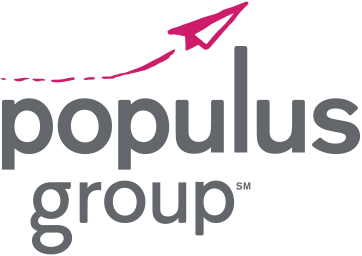15 minute read
The Fourth Quarter can feel like an odd time of year. Aside from the strange mix of Halloween and holiday displays at your local Targé, it also means we review the successes (and shortcomings) of the current year while making plans for the next year.
How do you hope to transform your organization in 2018? As you consider your goals, and the workforce you need to accomplish them, we encourage you slow down and survey the landscape first. A Career Builder Study found that 22 percent of people planned to change jobs in 2017--that's more than one in five people at your organization! But what if you could change that for 2018? How do you keep and attract the right people?
Understanding These Workforce Trends Can Help You Attract the Right Candidates

No matter what industry you're in, workforce expectations are shifting, and so are the things you could be doing to stay competitive. So take a look at some of the top trends that will impact your ability to retain and attract the right people.
1. Workforce Expectations for Employers Are Shifting
You’ve heard Millennials now occupy the majority of the workforce. But what does that mean for the talent supply chain? They’re not the only ones who favor careers with flexible schedules, entrepreneurial opportunities and work-life balance. The majority of the workforce now wants flexibility, paid sick time and affordable independent healthcare options. As other generations (and their parents) age, more of the workforce is willing to forgo traditional career paths and “protections” in favor of greater flexibility and work-life balance. The contingent labor market can facilitate these conditions for more jobs than ever before.
What does this mean for you? If you want to have meaningful conversations with your candidates, let them know you understand where they’re coming from. Chances are, their expectations are shifting too.
To stay competitive, make sure you've got a company culture and policies that embrace flexibility and have benefits that make your workforce feel valued.
2. The Growing Role of Non-Full-Time Employees
Consider this, in 1983 contract workers were just over 0.5% of all employment. Fast forward to 2016, CareerBuilder’s 2016 Job Forecast reported that 47% of employers hired contract workers for the year. And the forecasts say it’s only going to continue to gain speed. Are you utilizing this labor model? As the contingent workforce continues to grow, it will be increasingly important for organizations to adapt and change to stay competitive, so make sure you're considering all your options and staying in compliance along the way.

3. Non Full Time Roles Can Have Higher Job Satisfaction
Many people still want the security of a full time role. They think it’s in their best interest. These candidates may be surprised that Business & Legal Resources (BLR) data found that “contingent workers have greater job satisfaction, 86%, compared to 73% of permanent workers." The majority, 54%, also state “I’m paid what I’m worth” compared to 42% regular workers. These numbers reflect multi-generational attitudes and beliefs. So consider how non full time roles can play a part at your organization. These data points can help you shift the conversation and maybe change some opinions along the way, so you can connect the best candidates with roles that they may not have considered.
4. Temporary to Permanent Hire Conversion Rate Is Still Low
Did you know that in 2016 only 10% of contingent workers became permanent hires? That means the talent you’re engaging with has a 90% chance of reentering the talent pool in the future. This reinforces the need to create meaningful partnerships with your talent because more people are interested in being a contingent worker indefinitely. If they view you as a good partner, they’re more likely to reconnect with you when they’re looking for their next assignment.
5. Company Culture Plays a Big Part in Many Candidates' Professional Choices
In a recent Ardent Partners study, The State of Contingent Workforce Management 2016-2017, they determined that 60% of non-employee workers said that the opportunity to “[be] part of a culture that embraces them” which plays a huge role in their decision of where to work (more here). So play that up when you can! It’s on peoples’ minds and it can help make you the right fit for the candidate.

6. Communication Can Translate to Job Satisfaction
Facilitating job satisfaction with your employees isn’t a one-size fits all procedure or guarantee. It’s a process that requires communication and strategic alignment. For your existing employees, make sure you understand what makes them tick, what they like and how they prefer to communicate. This can help build a solid relationship that can last the tests of time and bumps in the road. Take the time to understand their passions, and if you can, incorporate them into their work life, or see how you can plan to work toward that in the future. The more communication you have, the more you can proactively troubleshoot problems, smooth over existing ones and build trust with your employees so you have have a solid, lasting relationship.
7. Improving Relationships with Employees is Good for Your Brand
You’re only as strong as your relationships. In an era of Glassdoor, Yelp and online reviews, make sure you're in-touch with your employees. Spend some extra time to understand them as a part of your team and as people. The outcome is a shift in your relationship, in which employees are listened to, they’re understood, and they’re empowered as brand ambassadors.
The Bottom Line
Attracting (and retaining) the right people to achieve your organizational goals is getting more and more competitive. As the contingent workforce continues to grow, the different options available to candidates does too. They have more choices now than ever, so if they're not happy, it's getting easier for them to walk away and find new opportunities. It's important to make sure you have the right conversations all the stakeholders of your organization, from leadership and candidates, to see how you can build an organization and a program that people want to be a part of.
How healthy is your program?
If you enjoyed this post, you may also like:
Top 3 Contingent Workforce Trends to Track Right Now
What’s the First Thing You Learn in the Army?
Compliance Round-up: Workforce Updates





 Ejay Oravecz
Ejay Oravecz Brandon Byrd
Brandon Byrd Austin McCool
Austin McCool
Leave a comment